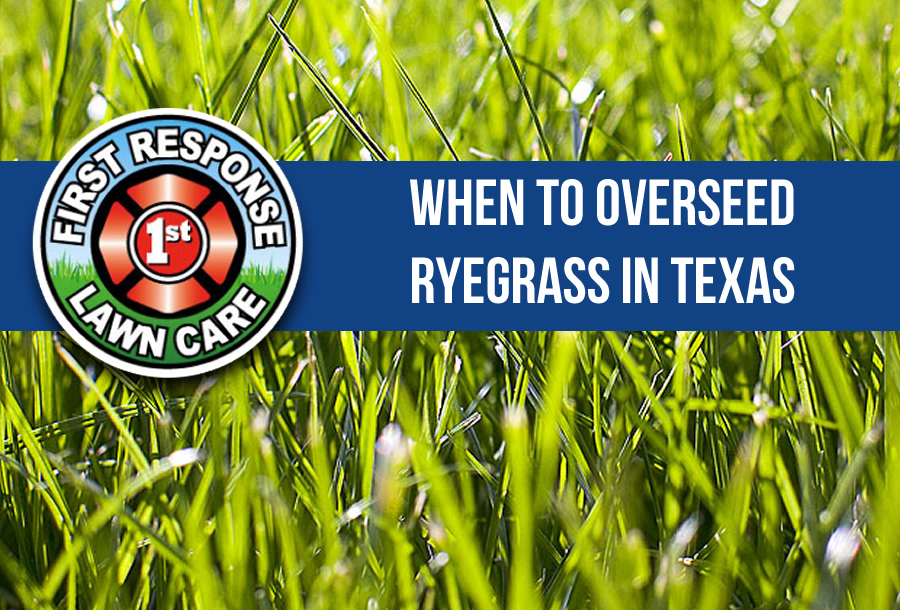Overseeding with Ryegrass – is this a good or bad idea? To answer that question you might first consider the following:
Do you have Bermuda grass?
Is the area you want to overseed a full sun area?
Are you trying to use fewer herbicides?
Do you mind mowing in the winter?
Are you prepared to use more water?*
If you answered yes to all of these questions then you may want to overseed your lawn. *Be aware that some city’s watering restrictions may also include restrictions on overseeding in the winter.
Bermuda is the best grass to overseed because it is the easiest to prepare to be seeded. Bermuda can be scalped so that the seed will make good contact with the soil, which is critical for germination. At. Augustine, on the other hand, is the most difficult to prepare because you cannot scalp it without damaging the stolons. Also, St. Augustine is thick, reducing the germination of ryegrass and requiring a higher seedling rate. Finally, Brown Patch can be very damaging to St. Augustine in the fall – a result of overwatering. Unfortunately, when overseeding with ryegrass, frequent watering is necessary to allow for germination, which often causes a severe outbreak of Brown Patch in the lawn.
It is recommended to only overseed ryegrass in full sun. Shady areas will transition slowly back to perennial summer grasses causing it undue stress.
Overseeding with ryegrass requires less use of herbicides. Overseeding will reduce the need for a fall pre-emergent herbicide. Weeds are at their worst in early spring before the summer grasses green-up. A healthy stand of ryegrass will keep spring weeds to a minimum, thereby reducing chemical usage.
Overseeding with ryegrass requires more mowing. Ryegrass will need to be mowed every 10 to 14 days when temperatures are under 50 F and ever seven days when temperatures are over 50 F. A benefit of regular mowing is that you keep weeds from flower and thus spreading.
Overseeding with ryegrass requires more water. Germination will require watering three to six times daily at anywhere from 30 seconds to one minute at a time until germination occurs. Then a watering schedule of one to two times daily for seven days will keep the newly germinated seedlings from drying out. After one week, cut back to watering three times per week over a two week period at three minutes per watering. The ryegrass should then be established enough to go to once-a-week watering. If you live in a city that restricts watering to 2 x per week or less with an automated system, you’ll have to hand water to achieve successful germination.
Perennial or Annual Ryegrass?
If you decide to overseed you have one more decision to make: Perennial vs. Annual. Perennial is typically preferred by professional grounds keepers for its superior dark green color and slower growth. Annual is a cheaper option and germinates three to eight days faster than perennial ryegrass. Also, annual ryegrass has a tendency to be very wet and hard to mow.
Transitioning Back to Warm-Season Grass
Ryegrass will die when the weather becomes hot in late spring, but the warm-season grasses will have suffered due to increased competition for water, nutrients and light. There are several management practices that encourage transition back to warm-season grass. Do not fertilize ryegrass in early spring, as this promotes competition with warm-season grass. Once the underlying grass greens up in spring, mow the ryegrass as closely as possible (without scalping the underlying grass.) This opens up the ryegrass canopy and allows light to reach the warm season grass. Once the warm-season grass begins vigorous growth, resume your normal lawn care program.

